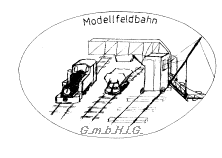

Modellfeldbahn GmbH i.G.
|
|
|
|
DIN Skips and trolleys with a pressed frame, the strong execution for clay (tile and brick factories) and wet earth and other heavy goods, 600 mm gauge (2 feet), tub content: 0,75 m3
|
Skips with riveted and welded frame; this is the original construction form for trolleys and was mainly used after the appearance of the pressed frame trolleys for bigger gauges beginning with 700 mm. Tub content: 2,0 m3 Models of this way of construction are planned in H0e as seen here. |
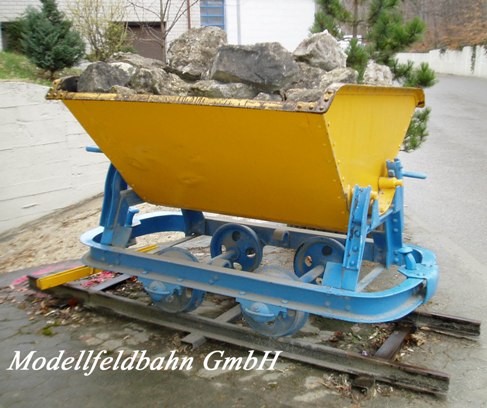 |
|
| DIN Skip with a pressed frame, the lightweight execution used for sand and gravel and stones, 600 mm gauge (2 feet), tub content: 0,75 m3 | The earliest steel skip and trolley construction, made of completely riveted steel. This skip worked in a quarry, which was closed in 1911 and thanks of a fall, it kept preserved difficultly reachable in a mountain forest. The steel profiles used are made (and rolled) to the German Emperors Norm (D.K.N.) of the 19th century, 600 mm gauge (2 feet). |
The skip "the automated wheelbarrow"
These trolleys
are also called skips because of their form are the most used means of transport
for the dug clay by the bucket chain excavator. The first trolleys were mostly
made of wood (see wood tipper trolley). The skip
was made of a “marriage” of a trolley of wood and a wheelbarrow of steel. The
aim was to facilitate the loading and unloading making both safe in the handling
in the same time. All this resulted in a skip made of steel.
Skips and trolleys had been built in all sizes. The smallest skips of 0,75 m3 content are and were always used for clay, because a bigger amount of the heavy, wet clay would make the bigger skips so heavy, that they can neither be tipped to be unloaded nor pushed manually.
In many places, horses were used as pulling power (for financial reasons). Skips of 0,75 m3 were the biggest trolleys, which were admitted legally to be pushed by hand or horsedrawn. With the use of bigger trolleys (1 m3 e.g.) an engine had to be acquired.
Here in modell the 0,75 m3 skips handmade of brass:
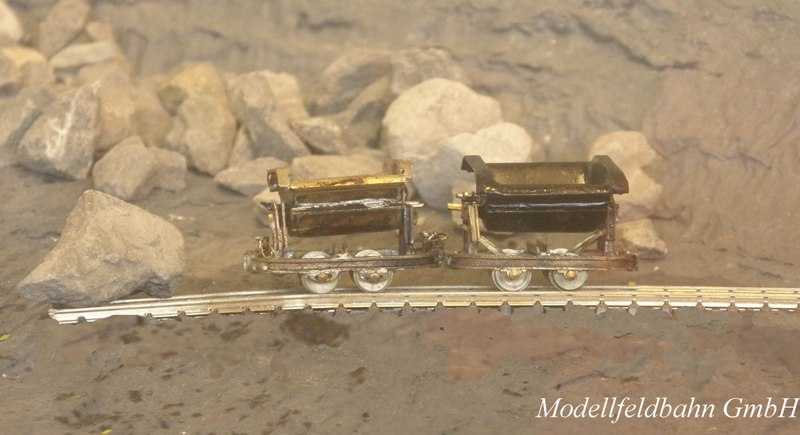
Closer view:
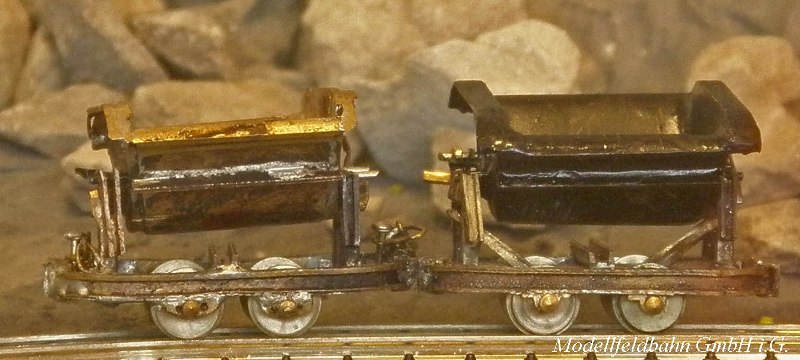
Here both versions I produce, more will follow soon:
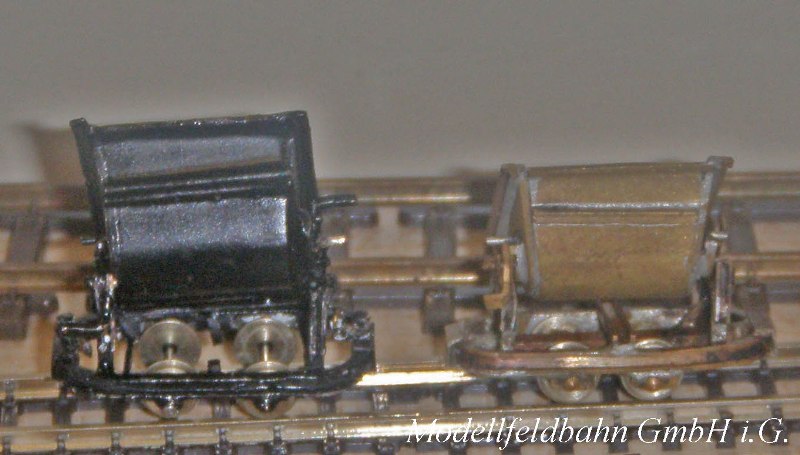
| Here the lightweigth skip to be pushed by hand in the painted | Here they heavy goods skip with a weathered tub (natural) everything unpainted |
| version with mit den functional blocking handle | in the natural coloring and as all skips with functional blocking handle |
More pictures will follow
The flat skips are useful for the transport of tools, beverages, machine parts or stones of all kind:
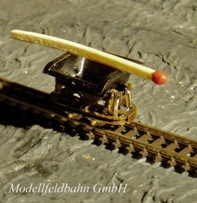 |
Partially without wheels in front of a matchbox as a comparison of its size.
Technical data, please
click here Interested (prices), please
click here